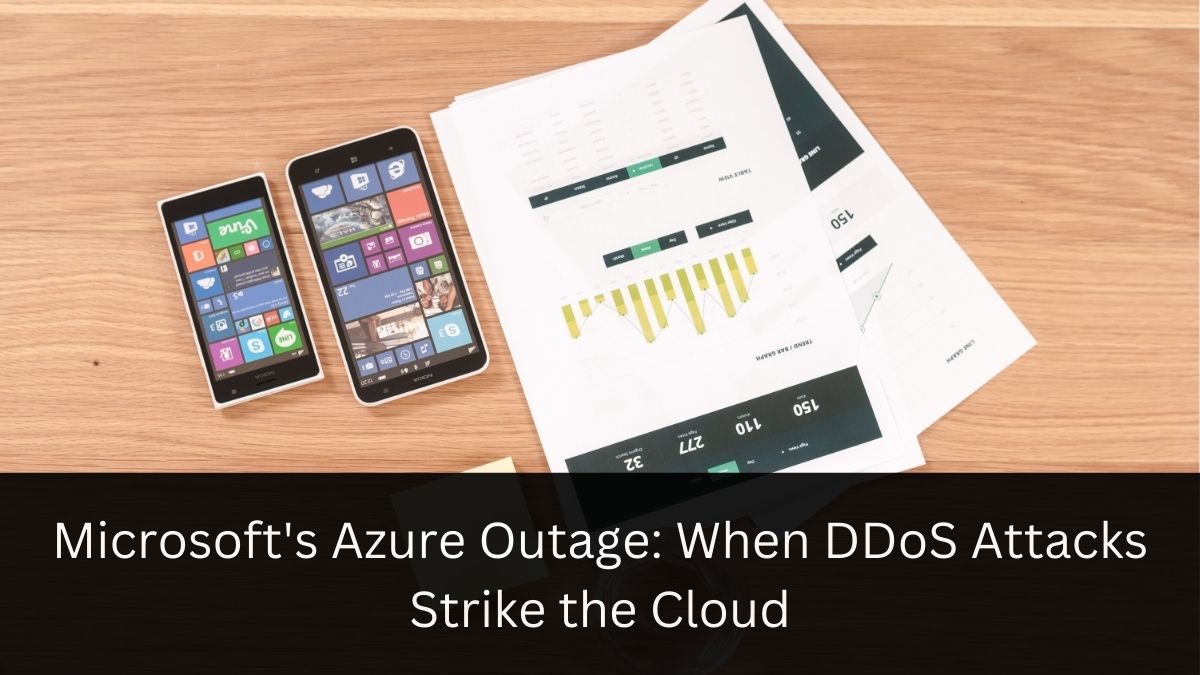Press Release
Microsoft’s Azure Outage: When DDoS Attacks Strike the Cloud

In the ever-evolving landscape of cloud computing, even tech giants like Microsoft aren’t immune to the occasional hiccup. On a seemingly ordinary Tuesday, millions of users worldwide found themselves grappling with a nine-hour outage that sent ripples through the digital ecosystem. As the dust settled, Microsoft confirmed what many had suspected: a distributed denial-of-service (DDoS) attack was the culprit behind this massive disruption.
The Anatomy of an Outage
A Digital Domino Effect
Picture this: You’re sipping your morning coffee, ready to dive into your workday, when suddenly your Microsoft 365 apps start throwing tantrums. You’re not alone. From Entra to Azure, a wide array of Microsoft services decided to take an unscheduled break, leaving users and IT departments scrambling.
The outage didn’t discriminate. It affected a broad spectrum of services, including:
- Microsoft Entra
- Microsoft 365 suite
- Microsoft Purview services (Intune, Power BI, Power Platform)
- Azure App Services
- Application Insights
- Azure IoT Central
- Azure Log Search Alerts
- Azure Policy
- Azure portal
For nine long hours, the digital world held its breath, waiting for normalcy to return.
The Unexpected Culprit
Initially, Microsoft attributed the outage to an “unexpected usage spike.” It’s a phrase that might make you raise an eyebrow. After all, isn’t handling unexpected spikes what cloud services are designed for?
As it turns out, there was more to the story. In a later statement, Microsoft revealed the true nature of the beast: a DDoS attack. But here’s where it gets interesting. The attack itself wasn’t the sole problem. Microsoft’s own defenses, ironically, amplified the issue.
Unraveling the DDoS Mystery
What is a DDoS Attack?
For those not versed in the dark arts of cybercrime, a DDoS attack is like a digital flash mob. Imagine thousands of computers, often infected with malware, suddenly flooding a target with traffic. The goal? To overwhelm the system and bring it to its knees.
The Twist in the Tale
What makes this incident particularly noteworthy is Microsoft’s admission that their own DDoS protection mechanisms played a role in exacerbating the problem. It’s a stark reminder that even the most sophisticated defense systems can sometimes backfire.
As one cybersecurity expert I spoke with put it, “It’s like having a really good immune system that overreacts to a threat, causing more harm than the initial infection.”
The Ripple Effects
Business Disruptions
The outage didn’t just inconvenience individual users. Entire businesses found their operations grinding to a halt. I spoke with Sarah, an IT manager at a mid-sized firm, who described the scene:
“It was chaos. Our teams rely heavily on Microsoft 365 for collaboration. Suddenly, we were thrust back into the stone age of communication. Phone lines were jammed as people tried to figure out what was happening.”
Trust and Reliability Concerns
For many, this incident raised questions about the reliability of cloud services. John, a small business owner, shared his perspective:
“We moved to the cloud for reliability and security. When something like this happens, it makes you wonder if you’ve put all your eggs in one basket.”
Microsoft’s Response and Future Plans
To their credit, Microsoft hasn’t shied away from addressing the issue head-on. They’ve promised a detailed post-incident review, with a preliminary report expected within 72 hours and a final review within two weeks.
The company has also taken immediate steps to bolster its defenses:
- Implementing networking configuration changes
- Performing failovers to alternate networking paths
These measures aim to enhance their DDoS protection efforts and prevent similar incidents in the future.
A History of Hiccups
This isn’t Microsoft’s first rodeo when it comes to outages. In June 2023, a group known as Anonymous Sudan (believed to have Russian links) successfully disrupted Azure, Outlook, and OneDrive portals. More recently, in early August 2024, a configuration change in Azure led to another widespread outage.
These incidents serve as reminders of the complex nature of cloud infrastructure and the constant vigilance required to maintain it.
Lessons for the Future
For Cloud Providers
- Continuous Improvement: Even the most robust systems need regular evaluation and enhancement.
- Transparency: Clear, timely communication during outages is crucial for maintaining user trust.
- Redundancy: Exploring ways to create more resilient systems that can withstand various types of attacks.
For Businesses and Users
- Diversification: Consider using multiple cloud providers or having offline backups for critical systems.
- Contingency Planning: Develop and regularly update plans for dealing with cloud service disruptions.
- Stay Informed: Keep abreast of your cloud provider’s security measures and incident response protocols.
As we increasingly rely on cloud services for both personal and professional needs, incidents like this serve as sobering reminders of our digital dependencies. They prompt us to question, adapt, and innovate.
For Microsoft and other cloud giants, the challenge lies in staying one step ahead of potential threats while maintaining the seamless experience users expect. It’s a delicate balance between security and usability, one that requires constant vigilance and adaptation.
As users, we’re reminded of the importance of digital resilience. Perhaps it’s time to dust off those offline communication plans or explore multi-cloud strategies.
In the end, this incident is but a chapter in the ongoing saga of our digital evolution. It’s a testament to both the vulnerabilities and the remarkable resilience of our interconnected world. As we move forward, let’s carry these lessons with us, using them to build a more robust, secure digital future.
After all, in the cloud, as in life, it’s not about avoiding storms altogether, but learning to dance in the rain.
